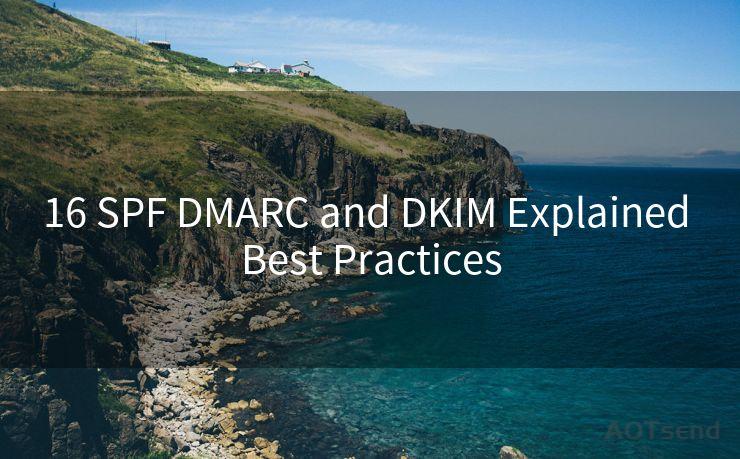16 SPF DMARC and DKIM Explained Best Practices




Email authentication is crucial in today's digital landscape, where phishing attacks and email spoofing are common threats. To combat these issues, several email authentication protocols have emerged, including Sender Policy Framework (SPF), Domain-based Message Authentication, Reporting, and Conformance (DMARC), and DomainKeys Identified Mail (DKIM). In this article, we'll explore the best practices for implementing these protocols to enhance email security.

🔔🔔🔔
【AOTsend Email API】:AOTsend is a Managed Email Service for sending transactional emails. Support Email Types: reminders, authentication, confirmations, notifications, verification codes, invoices, password resets, account activations, billing statements, two-factor authentication (2FA), and one-time passwords (OTP) emails, etc. $0.28 per 1000 Emails. 99% Delivery, 98% Inbox Rate.
You might be interested in:
Why did we start the AOTsend project, Brand Story?
What is a Managed Email API, How it Works?
Best 25+ Email Marketing Platforms (Authority,Keywords&Traffic Comparison)
Best 24+ Email Marketing Service (Price, Pros&Cons Comparison)
Email APIs vs SMTP: How they Works, Any Difference?
1. Understanding SPF (Sender Policy Framework)
SPF is a DNS-based email authentication method that specifies which IP addresses are authorized to send emails from a particular domain. It helps receivers verify the legitimacy of an email's sender by checking the sending server's IP address against the SPF record in the sender's DNS.
Best Practice for SPF:
- Keep your SPF record up to date, including all authorized sending sources.
- Avoid creating overly complex or long SPF records, which can cause processing delays or errors.
- Regularly monitor and validate your SPF configuration using online tools.
2. DMARC (Domain-based Message Authentication, Reporting, and Conformance) Explained
DMARC builds upon SPF and DKIM by providing a policy framework for domain owners to specify how receivers should handle unauthenticated emails. It enables senders to receive reports on email authentication failures, helping them identify and mitigate potential spoofing attempts.
Best Practice for DMARC:
- Start with a monitoring policy (p=none) to collect data on authentication failures before implementing a stricter policy.
- Gradually move to a quarantine (p=quarantine) or reject (p=reject) policy as you gain confidence in your authentication setup.
- Ensure your email infrastructure supports DMARC reporting to gain insights into authentication issues.
3. DKIM (DomainKeys Identified Mail) and Its Importance
DKIM uses cryptographic signatures to verify the authenticity and integrity of an email message. It ensures that the email content hasn't been tampered with during transit.
Best Practice for DKIM:
- Generate a unique DKIM key pair for your domain and keep the private key secure.
- Publish the public key in your DNS as a TXT record for verification by receiving servers.
- Regularly rotate your DKIM keys to maintain security.
4. Implementing SPF, DMARC, and DKIM Together
For maximum email security, it's essential to implement all three protocols together. They complement each other, providing multiple layers of authentication and verification.
Best Practice for Combined Implementation:
- Ensure all three protocols are correctly configured and working in harmony.
- Monitor authentication reports regularly to identify and address any issues promptly.
- Educate your team on the importance of email authentication and the role of these protocols.
By following these best practices for SPF, DMARC, and DKIM implementation, you can significantly enhance your organization's email security and protect against spoofing and phishing attacks. Remember, email authentication is an ongoing process that requires regular monitoring and updating to stay ahead of evolving threats.




Scan the QR code to access on your mobile device.
Copyright notice: This article is published by AotSend. Reproduction requires attribution.
Article Link:https://www.mailwot.com/p5797.html



